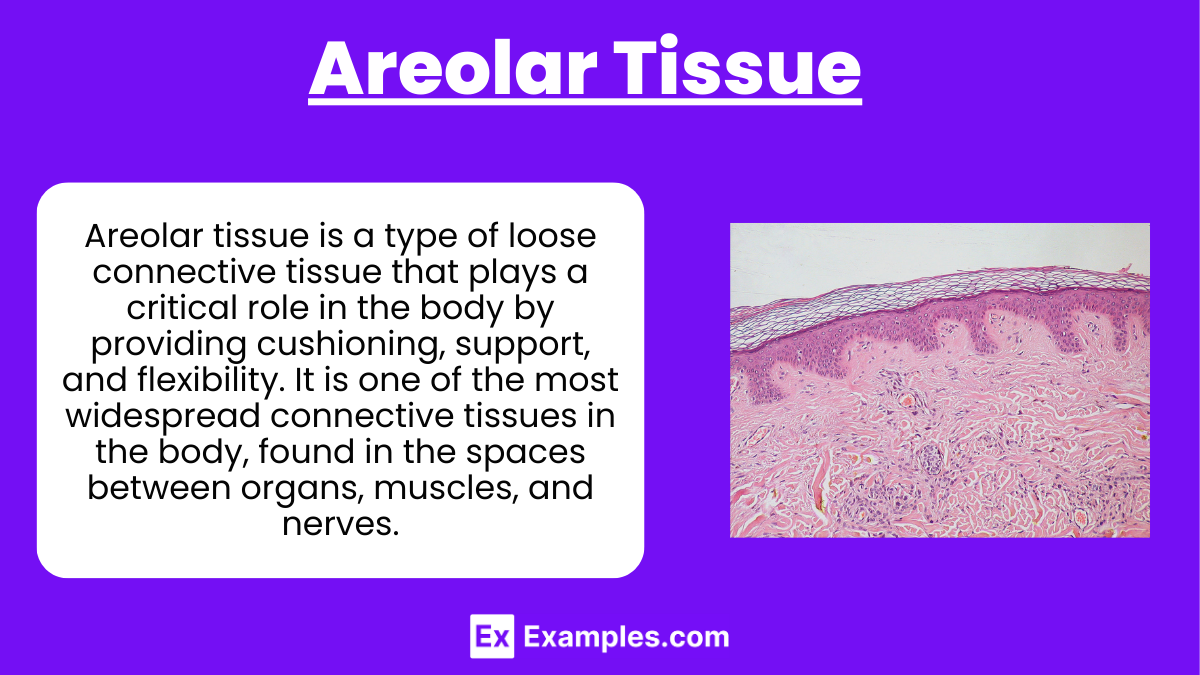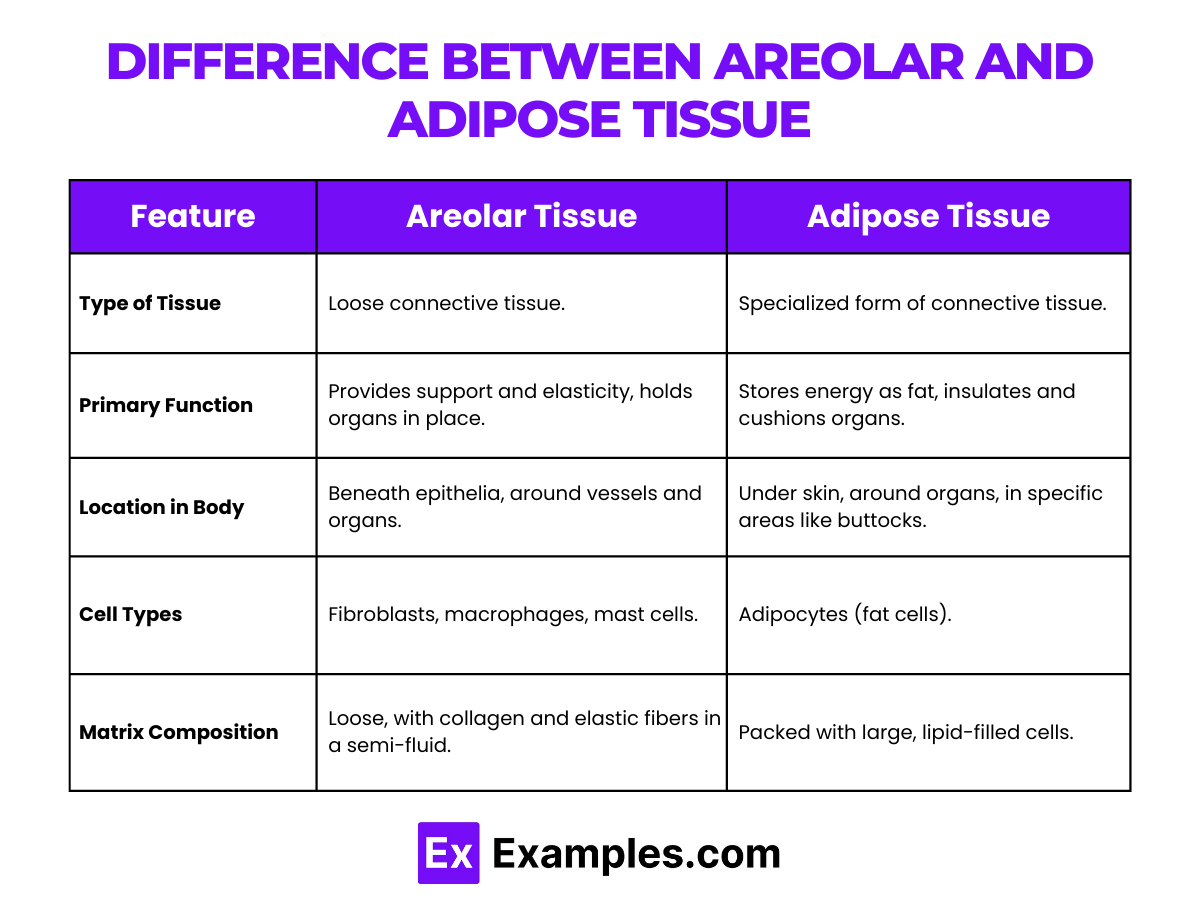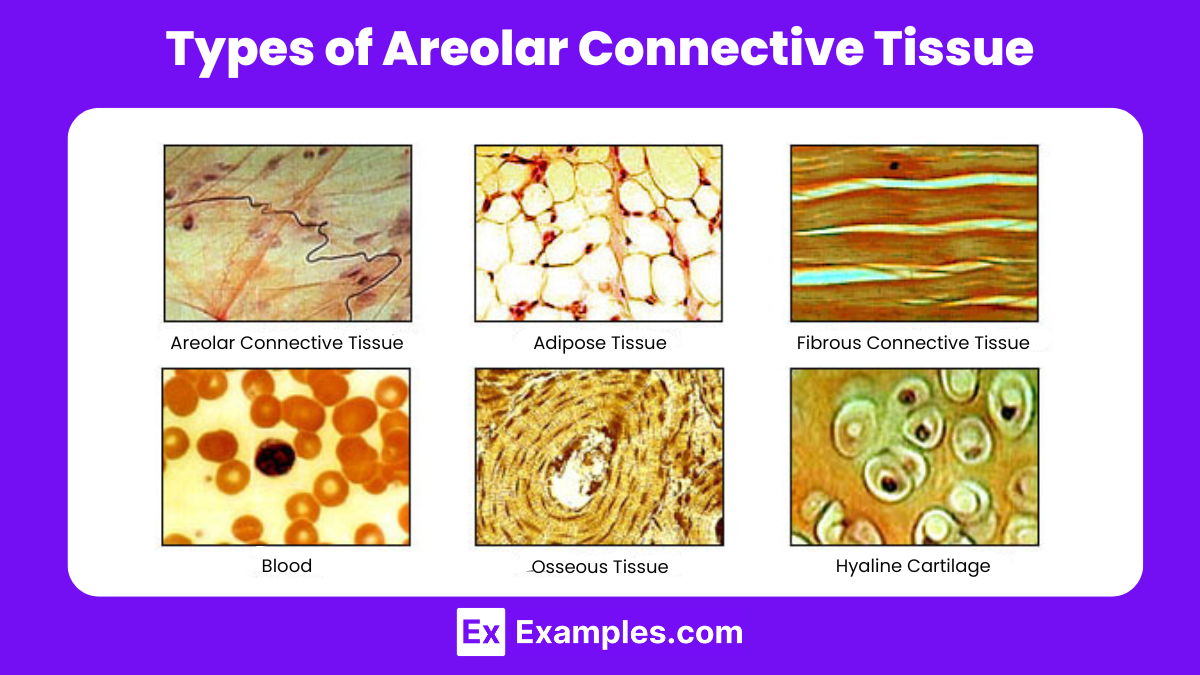What type of connective tissue is areolar tissue?
Dense regular connective tissue
Loose connective tissue
Cartilage
Bone


Discover the fascinating world of areolar tissue with our comprehensive guide, designed to enlighten you on this essential component of the human body. Serving as a versatile connective tissue, areolar tissue plays a crucial role in providing support, strength, and elasticity across various organs. This guide offers insightful examples and dives deep into its functions, structure, and significance in healing and protection. Embark on a journey to understand how areolar tissue underpins bodily resilience and health, making it a pivotal study in anatomy and physiology.
Areolar tissue is a type of loose connective tissue that plays a critical role in the body by providing cushioning, support, and flexibility. It is one of the most widespread connective tissues in the body, found in the spaces between organs, muscles, and nerves. Areolar tissue is characterized by a loosely organized arrangement of fibers, cells, and a semi-fluid ground substance. This composition allows for the absorption of shocks, the provision of a water and nutrient reservoir for surrounding tissues, and a defense against infection.The tissue contains three main types of fibers: collagen fibers for strength and support, elastic fibers for flexibility and resilience, and reticular fibers for supporting the soft tissue of organs. It also contains a variety of cells such as fibroblasts (which produce the fibers), macrophages (which are involved in the immune response), and adipocytes (fat cells).
Areolar connective tissue is a type of loose connective tissue that plays a crucial role in the body. It provides several important functions, including:
Areolar connective tissue, which is one of the most widely distributed connective tissues in the body, serves as a universal packing material between other tissues. It provides strength, elasticity, and metabolic support to tissues and organs. However, like other tissues, areolar tissue can be affected by various diseases and conditions, some of which include:

| Feature | Areolar Tissue | Adipose Tissue |
|---|---|---|
| Type of Tissue | Loose connective tissue. | Specialized form of connective tissue. |
| Primary Function | Provides support and elasticity, holds organs in place. | Stores energy as fat, insulates and cushions organs. |
| Location in Body | Beneath epithelia, around vessels and organs. | Under skin, around organs, in specific areas like buttocks. |
| Cell Types | Fibroblasts, macrophages, mast cells. | Adipocytes (fat cells). |
| Matrix Composition | Loose, with collagen and elastic fibers in a semi-fluid. | Packed with large, lipid-filled cells. |
| Visual Characteristics | Spongy, flexible, with visible fibers. | Denser, with a uniform appearance due to fat droplets. |
Areolar connective tissue is a fundamental and versatile type of connective tissue found throughout the body. It plays a critical role in providing support and nourishment to the organs and other types of tissues. Here are its key characteristics:

Areolar connective tissue is a type of loose connective tissue that plays a critical role in providing support and flexibility to various structures of the body. However, the term “areolar connective tissue” itself refers to a specific kind of tissue rather than categorizing different types within it. It’s characterized by a loose arrangement of its fibers and cells, offering a cushion and a flexible matrix for other tissues and organs. This allows for effective protection, support, and the integration of bodily components.While there aren’t distinct “types” of areolar tissue in the way one might categorize subtypes of other tissues, areolar tissue is part of a broader classification of connective tissues, each with its specialized functions and characteristics. Here’s an overview of related connective tissue types for context:
In summarizing areolar connective tissue, it’s clear that this tissue type is integral to the body’s structure and function. As a loose connective tissue, areolar tissue serves as a vital support matrix, filling spaces between organs and tissues, providing elasticity, and facilitating the exchange of nutrients and waste. Its unique composition—comprising a semi-fluid ground substance, a variety of cell types, and an assortment of fibers—enables it to perform these crucial roles effectively.
Areolar and adipose tissues are two types of connective tissues found in the body, each with distinct functions and structures. Areolar tissue, often considered the most common type of connective tissue, plays a crucial role in providing support and strength to the organs it surrounds. This tissue is characterized by a loosely organized array of fibers, including collagen and elastin, which allow for flexibility and resilience. It also contains a variety of cells, such as fibroblasts, which are responsible for producing these fibers, and immune cells that protect against pathogens.
Areolar connective tissue, a vital component of the body’s connective tissues, plays a multifaceted role in supporting and packing other types of tissues. It comprises a semi-fluid ground substance that allows the passage of nutrients between blood vessels and cells. The key cell types found in areolar tissue include fibroblasts, which produce fibers and ground substance; macrophages, which engulf pathogens and debris; mast cells, involved in inflammatory responses; and plasma cells, which produce antibodies. Additionally, adipocytes store fats, and white blood cells, which are involved in the immune response, can be found migrating through this tissue. Together, these cells contribute to tissue support, defense, and repair.
Areolar connective tissue is widely distributed throughout the body, serving as a universal packing material between other tissues. It is primarily located beneath the epidermis layer, enveloping and protecting blood vessels, nerves, and muscles. This tissue also forms part of the subcutaneous layer, connecting the skin to underlying muscles, thereby playing a crucial role in maintaining skin elasticity and flexibility. Furthermore, areolar tissue surrounds various organs, providing them with structural support and a protective cushion. Its extensive distribution and versatile nature make it essential in the repair of tissues and in the defense against pathogens, by serving as a battleground for immune responses.
Text prompt
Add Tone
10 Examples of Public speaking
20 Examples of Gas lighting
What type of connective tissue is areolar tissue?
Dense regular connective tissue
Loose connective tissue
Cartilage
Bone
Which of the following cells are commonly found in areolar tissue?
Osteocytes
Chondrocytes
Fibroblasts
Erythrocytes
What are the main fibers found in areolar tissue?
Reticular and elastic fibers
Collagen and reticular fibers
Collagen and elastic fibers
Reticular and keratin fibers
Where in the body is areolar tissue commonly found?
In the heart
In the epidermis
Beneath epithelial tissues
In the brain
Which of the following functions is NOT associated with areolar tissue?
Support and binding of other tissues
Storage of fat
Holding body fluids
Defense against infection
Areolar tissue contains a gel-like matrix primarily composed of:
Hyaline
Water and glycoproteins
Keratin
Calcium
Which of the following is a characteristic of areolar tissue?
High tensile strength
Rigid structure
Highly vascularized
Poorly vascularized
What role do mast cells in areolar tissue play?
Produce collagen fibers
Store and release histamine and heparin
Provide structural support
Store fat
Which immune cells are found in areolar tissue?
Neurons
Lymphocytes and macrophages
Adipocytes
Osteoclasts
Areolar tissue helps in the diffusion of nutrients and oxygen from:
Capillaries to epithelial cells
Cartilage to bone
Blood to the heart
Neurons to muscles
Before you leave, take our quick quiz to enhance your learning!

